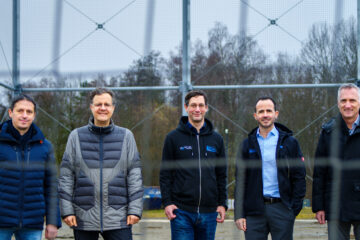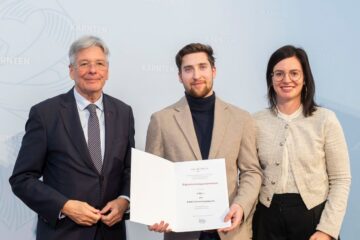
Udo Schilcher, Senior Researcher at the Institute of Networked and Embedded Systems, recently completed his post-doctoral university teaching qualification (habilitation) in Information and Communications Engineering. His research centres on improving communication between individual devices without connecting them via cables. There are potential applications in all wireless networks, from mobile phone networks to sensor networks in industrial plants and robot swarms.
Using the example of a mobile phone network is the best way to explain the first part of Udo Schilcher’s work over the past few years: When many smartphones are being used simultaneously and people are making calls or downloading data, a single channel may be used multiple times. Then, what should not happen, frequently does happen: Interference occurs. A similar situation arises in industrial environments, where thousands of devices work concurrently and share sensor data with each other. Here too, signals may drown each other out and the devices may not be able to receive the necessary information.
“In my habilitation, I used a mathematical model to analyse how strong these interferences are and how they fluctuate in time and space. It is not only crucial to recognise that there are disruptions, we also need to know how they change,’ Udo Schilcher explains. Most of his work involves basic research; several projects – for instance in cooperation with Lakeside Labs – address industrial use cases. Large production halls in particular present a number of challenges when it comes to implementing truly wireless sensor networks: “We have to imagine that there are often many machines and a great deal of metal, which can also interfere with transmission. The sensors are also frequently installed in hidden locations so that they are not easily reached by the transmission.”
His habilitation also includes work on robot swarms. Temporal synchronisation is necessary to ensure that the robots can work in a coordinated manner. This means that the robots have to be set very accurately to a common time so that they can perform tasks such as taking measurements synchronously. Again, communication between individual components plays a central role.
Udo Schilcher joined the ‘Mobile Systems’ research group at the University of Klagenfurt as a senior researcher in 2018. Prior to that, he held a similar position at Lakeside Labs from 2016 to 2018. He studied Informatics and Technical Mathematics in Klagenfurt and completed his doctoral thesis on “Inhomogeneous Node Distributions and Interference in Wireless Networks” in 2011. His cumulative habilitation thesis is entitled “Analysis of Mobile Wireless Systems: Interference Dynamics, Synchronization, and Swarming”. He has been actively involved in delivering teaching for many years, including his well-attended lecture course ‘Programming in C’ as well as practical courses such as ‘Fundamentals of Physics: Electricity and Magnetism’, ‘Mobile Communications’ and ‘Wireless Networks’.




